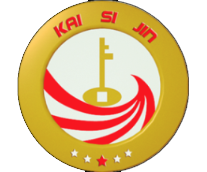Home
About Us
News
How do large CNC machining centers process parts?
2023-08-16
The handling of large-scale CNC machining process problems is basically the same as ordinary machining, but it also has its own characteristics. Therefore, when designing the CNC machining process for parts, it is necessary to adhere to the principles of good flexibility and high automation in CNC machining, especially suitable for machining curved and curved parts with complex contour shapes, as well as complex box and prism parts with a large number of holes and grooves. In the case of multiple varieties and small batch production, using CNC machine tools for machining can achieve high economic benefits. In large-scale CNC machining, the determination of the center to center tool point and tool change point is the starting point of tool movement relative to the workpiece during CNC machining. Since the program also starts executing from this point, the tool setting point is also known as the program starting point or tool starting point. When programming, the selection of the tool point position should be considered first. Large CNC machining When the machining accuracy requirements are not high, certain surfaces on the workpiece or fixture can be directly used as the cutting surface; When the machining accuracy requirement is high, the tool alignment point should be selected as much as possible on the design or process benchmark of the part. For parts positioned with holes, it is more appropriate to take the axis of the hole as the tool alignment point. The tool alignment point must have a certain coordinate relationship with the positioning reference of the workpiece in order to determine the relationship between the machine tool coordinate system and the workpiece coordinate system. The selection of tool alignment points should facilitate the calculation of coordinate values and facilitate tool alignment. When aligning the tool, it should be done so that the alignment point coincides with the tool point. The so-called tool point refers to the intersection point between the tool axis and the tool bottom surface for a flat end milling cutter; For ball end milling cutters, it refers to the center of the ball head part; For turning tools, it refers to the tool tip; For a drill bit, it refers to the drill tip; For wire electrode cutting machine tools, it refers to the focal point between the axis of the wire electrode and the surface of the part. When a tool change is required during the machining process, the tool change point should be specified, and the position of the tool change point should be set according to the principle of not damaging the workpiece, fixture, and machine tool during the tool change. Dongguan Kaisijin Technology Intelligence Co., Ltd. is mainly engaged in the design and manufacturing of various plastic molds, as well as processing services such as plastic Injection Molding
Share to:
